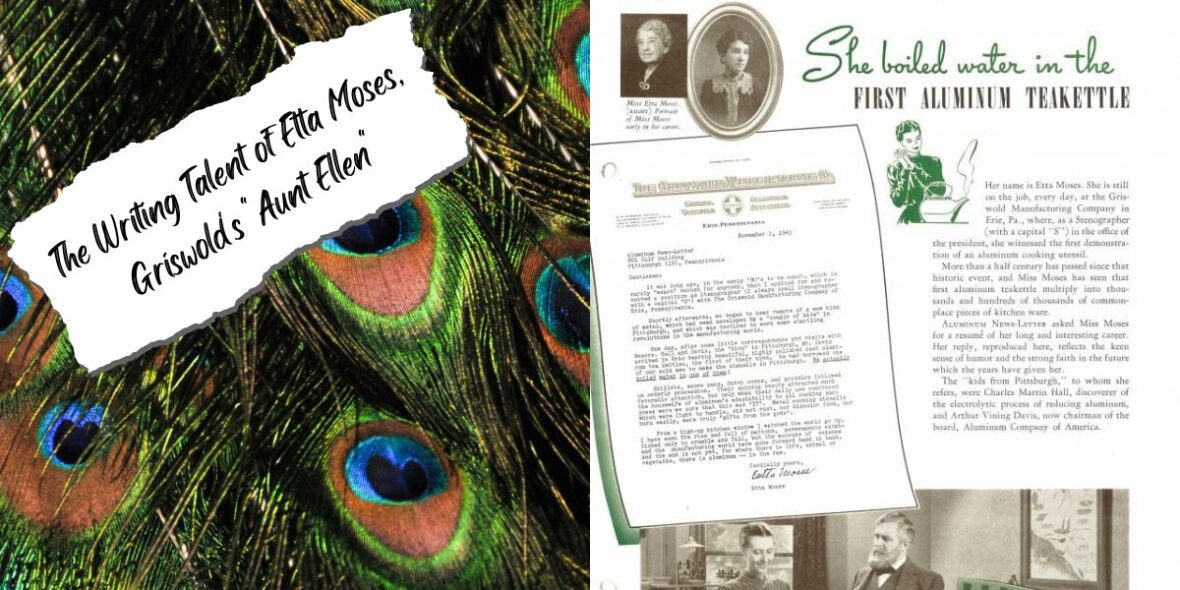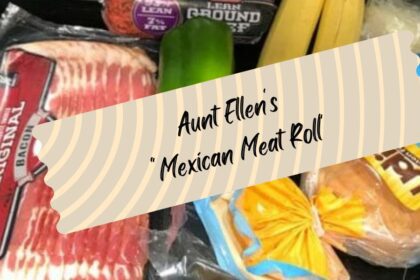I had read that Etta Moses had written the Griswold booklets with recipes,1but I had my doubts. I knew that Griswold had both an advertising agency and presumably a marketing department; I found it more likely that those groups generated and implemented the idea.
As I was going through “Aunt Ellen’s” booklets, particularly the “Aunt Ellen Booklet on Waterless Cooking with 50 Famous Recipes,” however, I was struck by the flowery language used in the introductory pages. It was so similar to the flowery language used by Aunt Ellen (Etta Moses) in her letters to consumers!
That same flowery language was used in Etta Moses’ letter to “Aluminum News-Letter,”2 when writing about her role as a driving force in the use of aluminum to make cookware.
See for yourself!
1928 Aunt Ellen Booklet on Waterless Cooking:
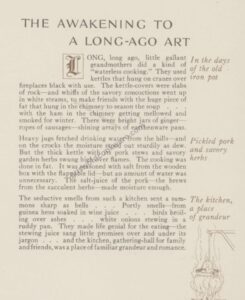
1925 letter to a Griswold consumer from “Aunt Ellen” (Etta Moses):
From a letter written by Etta Moses to ALCOA:
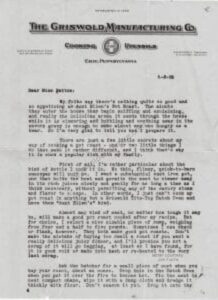
1943 letter from Etta Moses to the “Aluminum News-Letter”
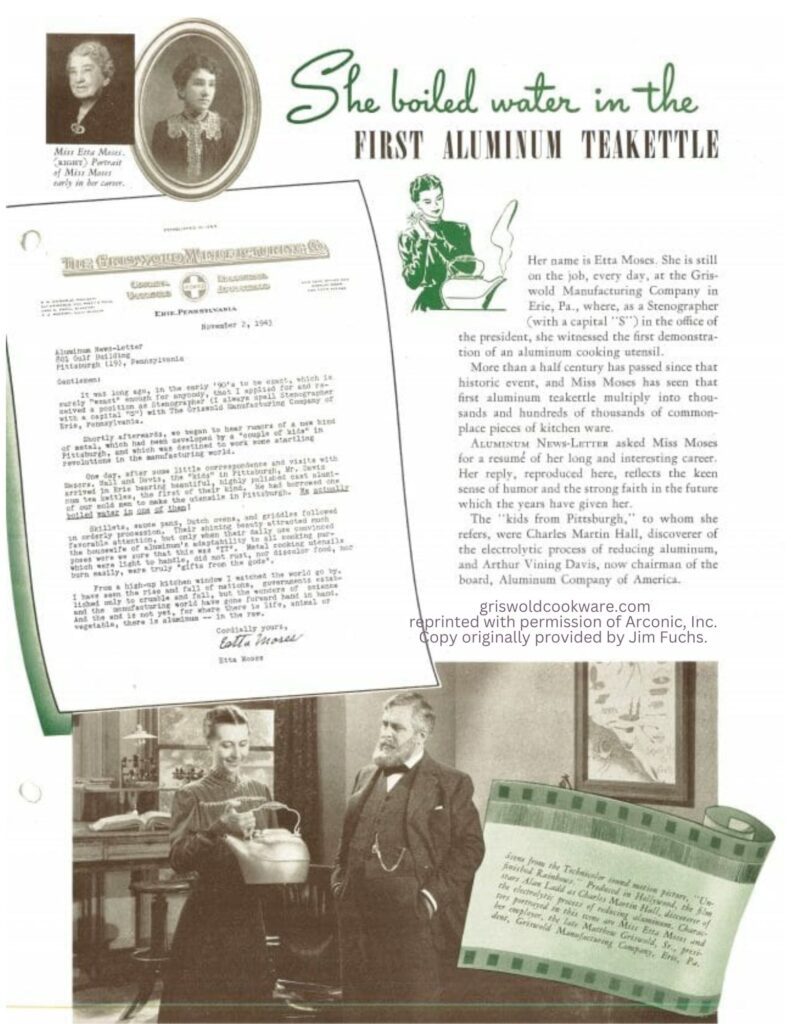
All written by Etta Moses?
These documents appear to me to have been written by the same hand. The effusive, elaborate descriptions in all three documents looks to me to be a “signature” of Etta Moses. She was also apparently fond of the hyphen — it is used in all three. She preferred the hyphen over the semicolon.
From a high-up kitchen
window I watched the world go by. I have seen the rise and fall of nations, governments established only to crumble and fall, but the wonders of science and the manufacturing world have gone forward hand in hand. And the end is not yet, for where there is life, animal or vegetable, there is aluminum — in the raw.Etta Moses letter to Aluminum News-Letter, November 2, 1945.
The minute they enter the house they begin sniffing and exclaiming, and really the delicious aroma it sends through the house while it is simmering and bubbling and seething away in its savory gravy is enough to make almost anyone as hungry as a bear. . . . There are just a few little secrets about my way of cooking a pot roast — one or two little things I do that make it rather different, and I think that’s why it is such a popular dish with my family.
“Aunt Ellen” (Etta Moses) letter to Griswold customer, June 2, 1925.
Heavy jugs fetched water from the hills — and on the crocks the moisture stood out sturdily as dew. But the thick kettle with its pork stews and savory garden herbs swung high over flames. The cooking was done in fat. It was seasoned with salt from the wooden box with the flappable lid — but an amount of water was unnecessary. The salt juice of the pork — the brews from the succulent herbs — made moisture enough.
The Aunt Ellen Booklet on Waterless Cooking, 1928.
See the similarities in prose?
When I met with Lodge collector Grady Britt, we discussed how Blacklock (the predecessor to Lodge) pieces are hard to identify unless marked “Blacklock.” Grady had a cast iron teakettle upon which a marked Blacklock lid perfectly sat. Given everything Grady knew about Blacklock and
Given the passage of time and its consequences, I probably will never know definitively whether Etta Moses wrote at least the introduction to the Waterless Cooking booklet. In my own mind, I’m comfortable concluding that she did,
I would have liked to have met Etta Moses. What a remarkable woman – what a way with words!

